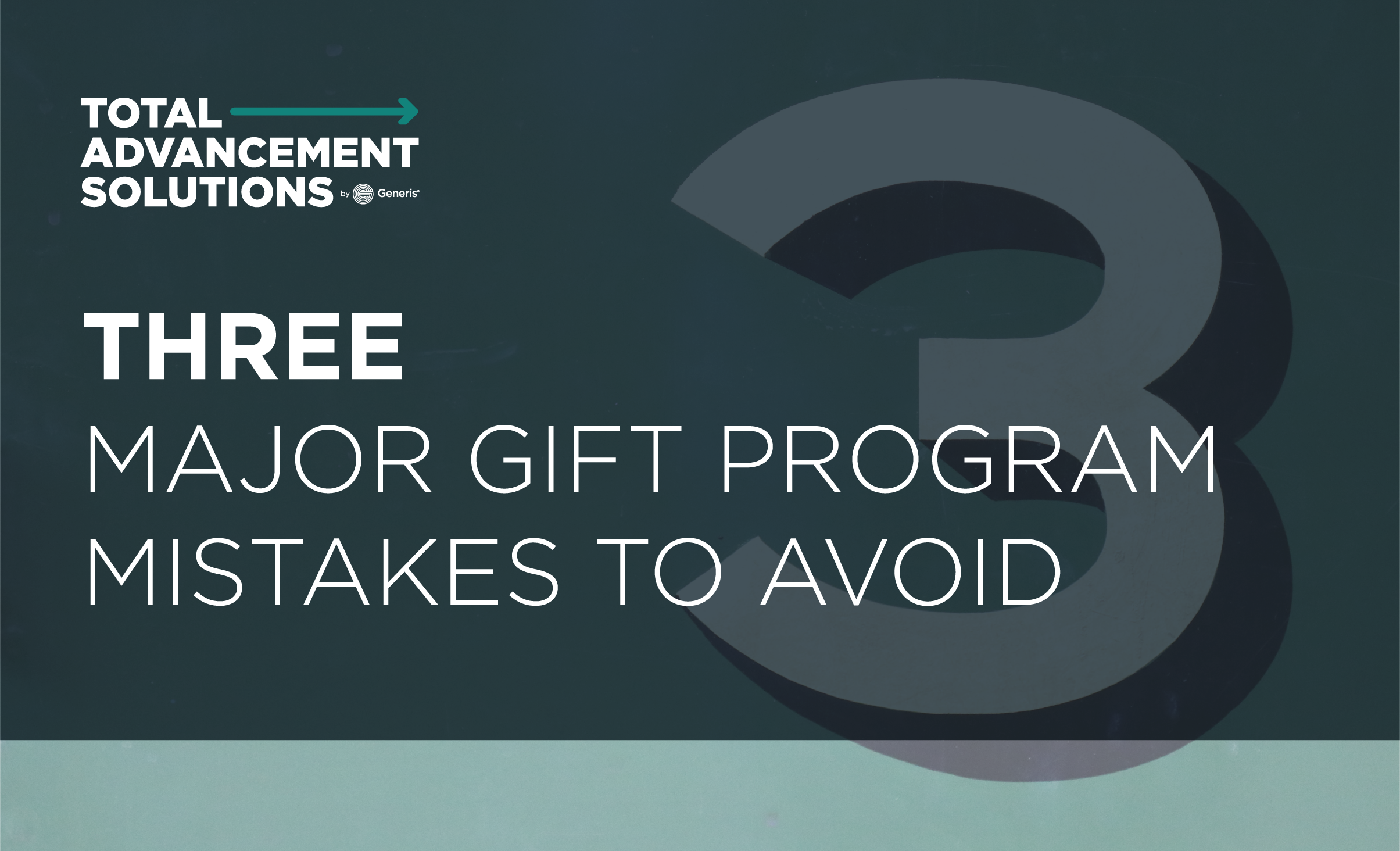The 4 Stages of Major Gift Prospecting in Christian Schools, Colleges & NPOs
While annual giving is the sustaining life-blood of a typical non-profit or educational institution, major gifts can transform an organization, allow it to expand, or even endow its programs in perpetuity. Their size varies from organization to organization depending on the organization’s size and average gift, but they represent gifts that dwarf an organization’s typical contributions. Because these gifts don’t come along every day, they require patience. To solicit and ultimately close such gifts require multiple visits and conversations with a potential donor. After all, you are asking for a significant gift! Thus deep relationship building is necessary, often taking 12-18 months to develop (and sometimes even longer!).

Such relationship building has four stages:
- Identifying your prospective donors: Potential givers to your organization should be evaluated based on a) affinity with your organization’s cause/mission, b) access directly to the individual and his/her networks of influence, and c) affluence and capacity to give.
- Cultivating your prospective donors: This stage, along with stewarding donors after they give, is the longest and most important activity in the major gift cycle. Any substantive relationship is based on listening. So listen, listen, listen! Learn what excites your prospective donor, what they are most passionate about, and what might motivate them to give. Only after you have learned as much as you can are you prepared to convey your organization’s mission and vision by linking the prospective donor’s interests with your organization’s work.
- Asking your prospects for support: You have assessed your prospective donor’s affinity, access, and affluence and have learned how best your prospect’s philanthropic goals and passions align with your organization’s work. Now you are ready to do perhaps the hardest thing for fundraisers to do: ask! Typically, for a major gift, a proposal is developed that spells out the “fit” between the individual’s interests and the organization’s work and then concludes with a specific dollar amount ask to partner with the organization in that work. Shared interests/passions/goals equate to the sharing of resources for realizing those interests/passions/goals. Not every ask will elicit a “Yes!,” but if you have spent the necessary time cultivating the relationship with the donor, then the ask is just another point in the process of relationship building. A “No” (especially if it is a “Not now”) isn’t the end of the relationship but merely a moment in the ongoing conversation you are having with your prospect.
- Stewarding their gift and your ongoing relationship: If you have successfully solicited a major gift, congratulations! But you aren’t finished with the relationship; you must dedicate time and resources to steward the partnership that has now formed between your organization and the donor. The “care and feeding” of donors is crucial to keeping the donor engaged with your organization and to allowing the donor to partner further with your organization as the relationship deepens and the process of cultivating, asking, and stewarding begins again.
Thus while major gift work takes patience, intentionality, and time, the payoff for an organization is significant, larger typically than any other development activity (e.g., direct mail, phone appeals, event fundraising). These types of gifts could easily amount to 80-90% of annual and/or campaign giving when a robust major gifts operation is in play, and yet these gifts will most likely come from approximately 10-20% of your donors (the Pareto Principle at work in fundraising!). And so time and resources should be appropriated accordingly. If 80% of your funding is coming from less than 20% of your donors, then 80% of your time and development resources should be focused on that 20% of your donor base.
So great care must be exercised in establishing a major gifts program, developing major gift officers/staff, and outlining reasonable yet aggressive goals and metrics to measure their effectiveness. Traditionally, major gift officers with a portfolio of 150 prospective donors were expected to have 10-15 significant engagements with their prospects (phone or, preferably, in-person meetings) per month, make 2-4 asks a month, and close on 1-2 gifts per month. More recent studies suggest that less is more—less emphasis on numbers of meetings, phone calls, etc., and more emphasis on the quality of prospective donor engagement. How deeply are you getting to know your major givers? What are their philanthropic interests and passions and how do those interests and passions connect with your organization’s mission and work?
When major gift work is done right, organizations are transformed. But when it is done poorly, relationships with potential donors of significant giving capacity could be ruined beyond repair. You only have one chance at establishing a positive and productive relationship with a donor! Thus obtaining fundraising counsel is crucial to establishing and growing successful major gift programs—programs that can change your organization for years to come.
Whether it's prospecting new donors for a capital initiative or stewarding their gift and ongoing relationship, the team at Generis has an extensive track record  serving ministries by helping them develop generous hearts and donors. Contact Jeff Hensley today with questions about Major Donor Development or Capacity Building in your organization.
serving ministries by helping them develop generous hearts and donors. Contact Jeff Hensley today with questions about Major Donor Development or Capacity Building in your organization.
Share this
You May Also Like
These Related Stories

3 Reasons Why Major Gifts Matter

Strategy, Donor Development and Gifted Givers


No Comments Yet
Let us know what you think